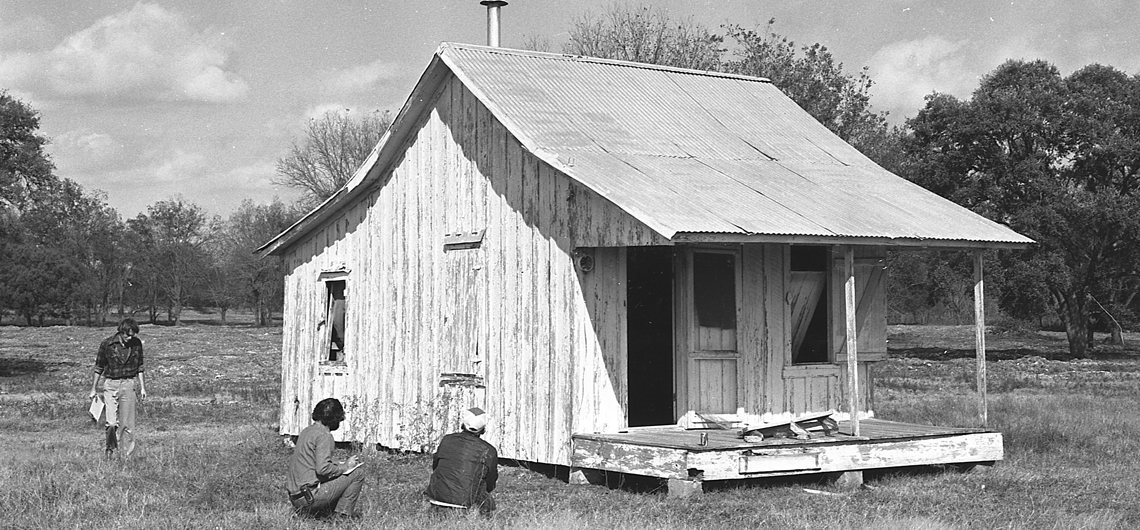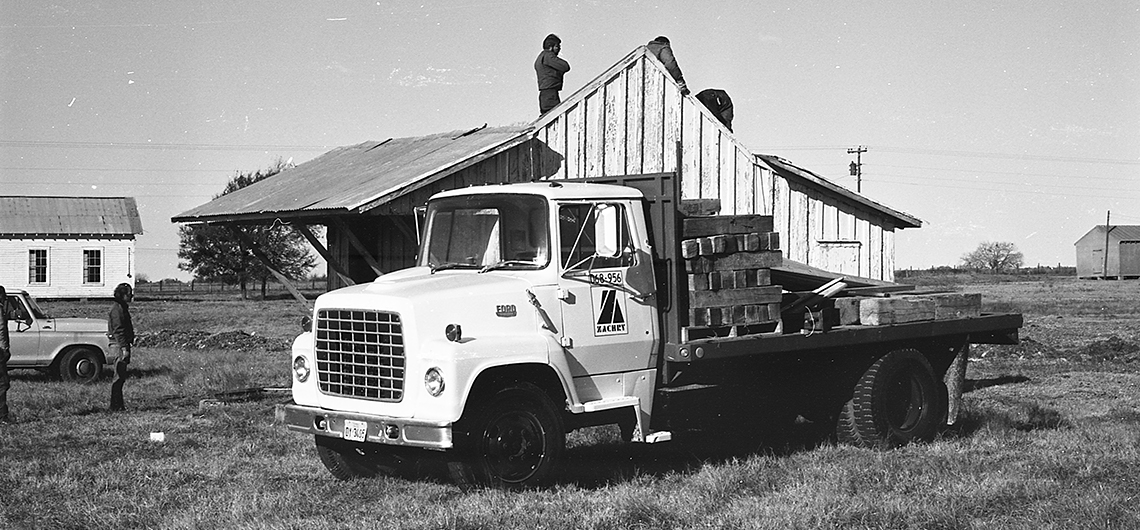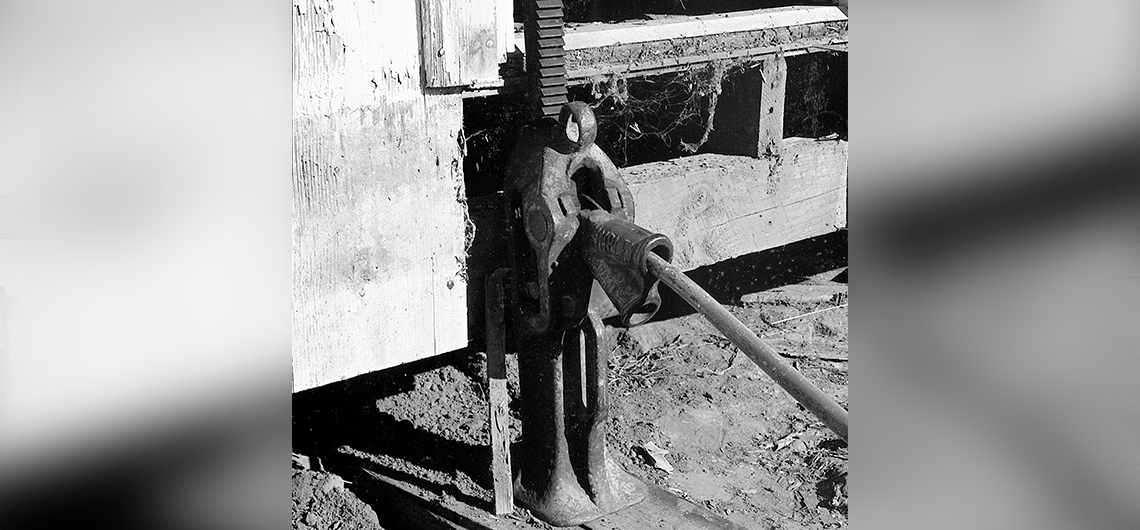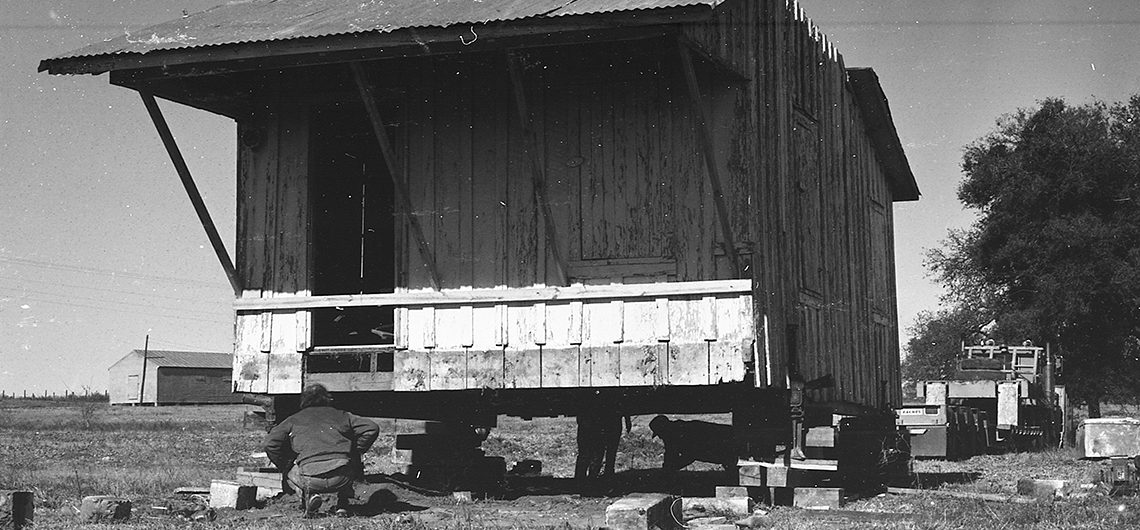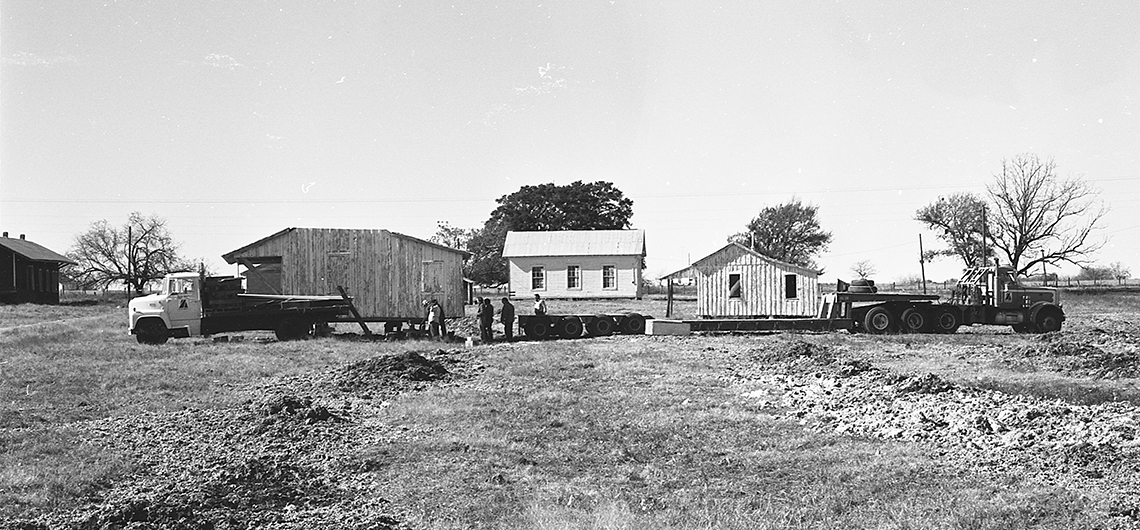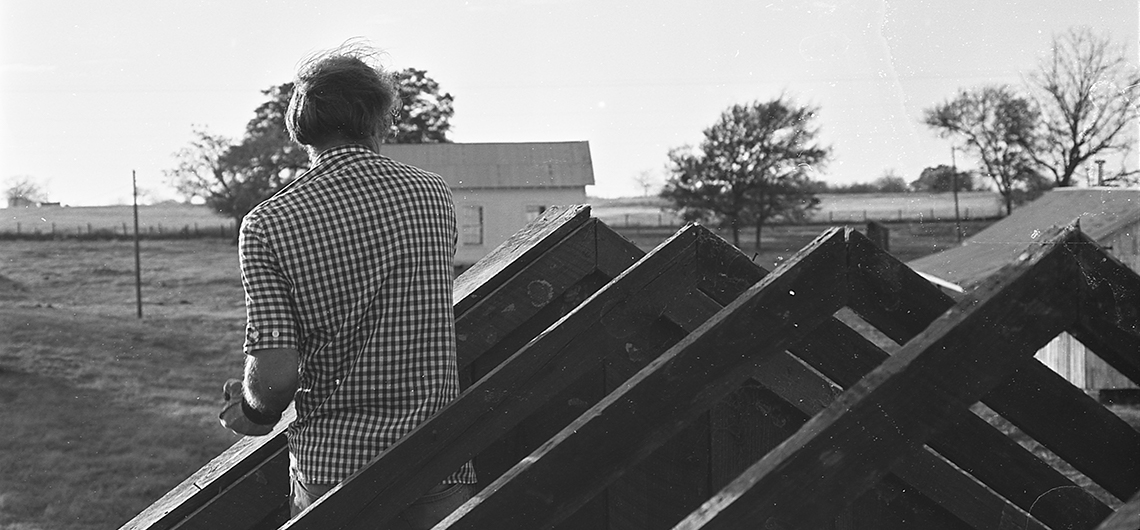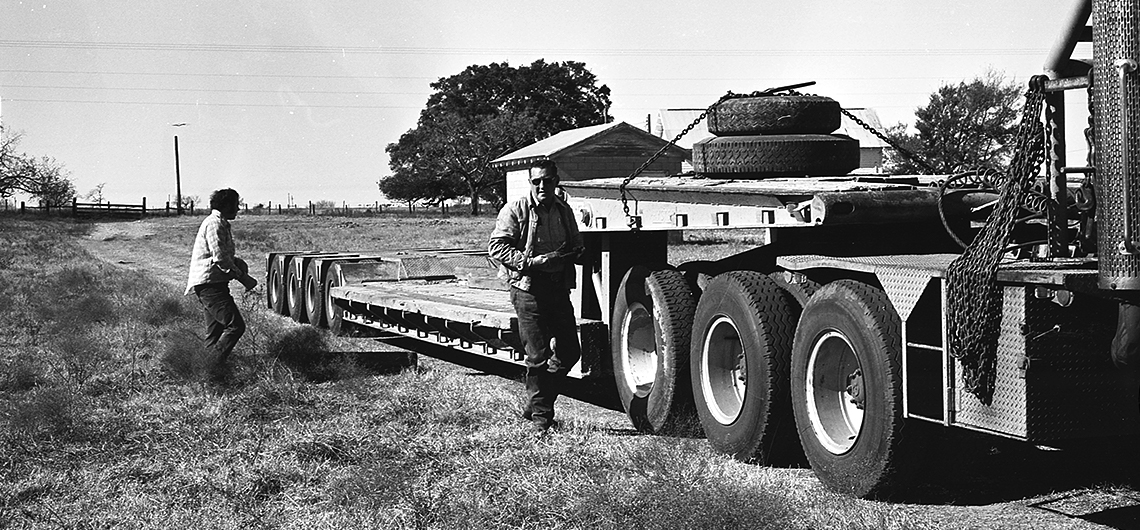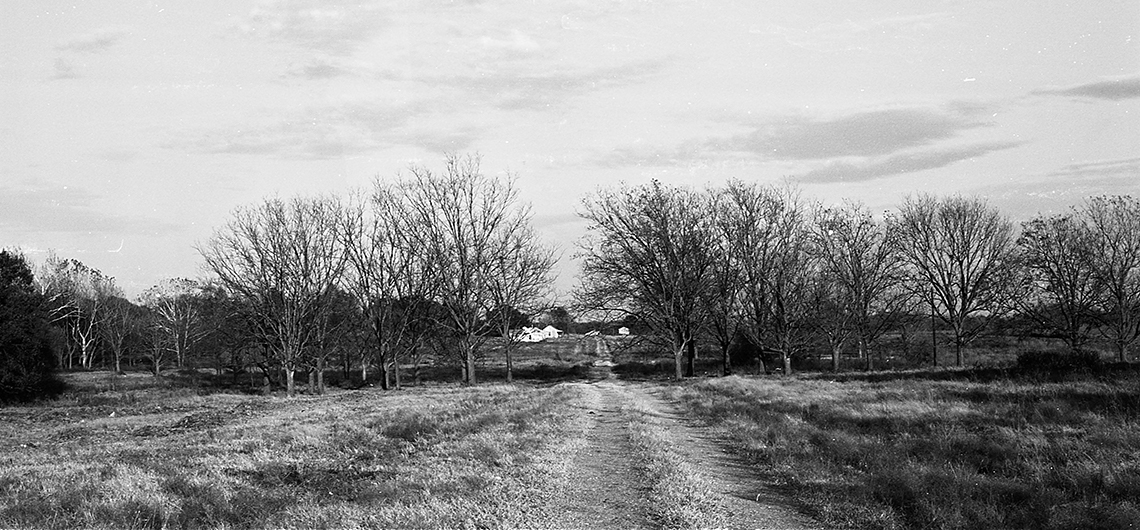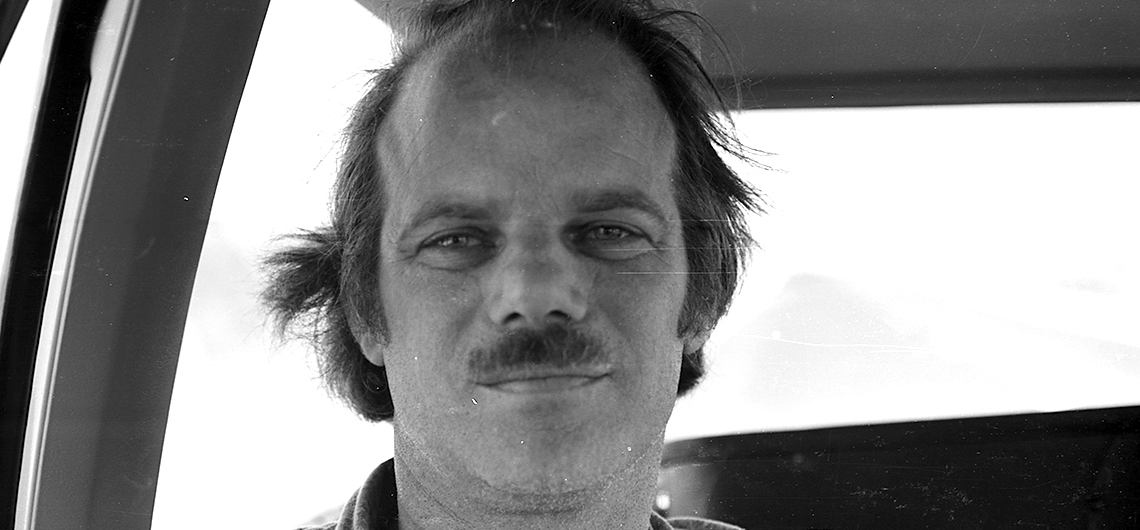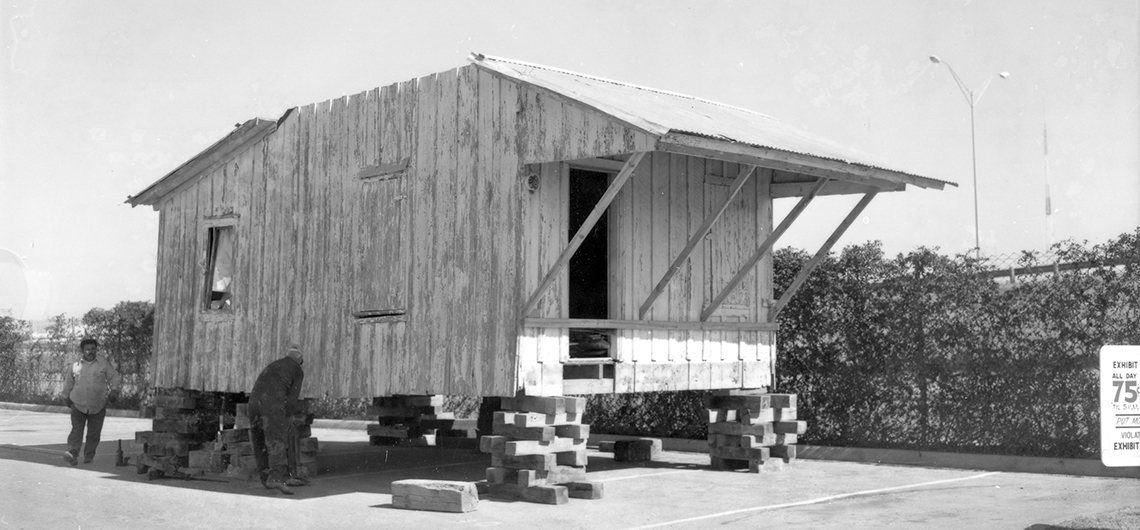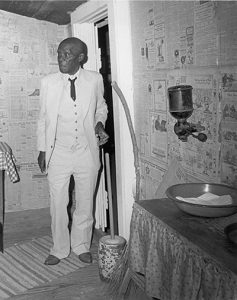The Institute did include an “Afro American Texans” kiosk upon its opening, and one of Texas’s most celebrated bluesmen, Mance Lipscomb, was an early special guest. But HemisFair was not the only historic event of 1968: criticism of the war in Vietnam and the struggle for civil rights permeated the national consciousness. Martin Luther King, Jr., was assassinated in Memphis two days before HemisFair opened. With these concerns in mind, the Institute directed one of its assistant researchers, Phil Hewitt, to serve as Lipscomb’s escort.
Ten years later, Hewitt was the ITC’s Director of Exhibits, and the Afro American Texans kiosk had not changed in the museum’s first decade. Hewitt, ITC folklorist Joe Graham, and other researchers and curators began to brainstorm how to update the exhibit and capture visitors’ interest. One of their first ideas: why not a house?
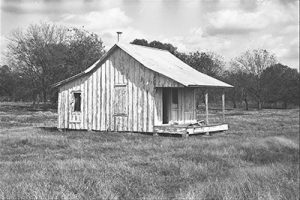
Graham already knew of multiple former sharecroppers’ homes, now standing uninhabited. In the summer of 1979, he and other ITC staff traveled to the Brazos River Bottoms to inspect potential houses. They decided on a two-room cabin in Navasota, on Tom Moore’s farm. After a few months of negotiation, Moore agreed to donate the cabin to the Institute. San Antonio construction firm H. B. Zachry donated the labor and equipment necessary for the nearly 200 mile journey from Navasota. To fit it into the building, ITC fabricators had to slice the cabin in half in the parking lot. By March, 1980, the house was in place on the exhibit floor and ready to be transformed into an interactive exhibition.
To keep the exhibition as representative of real, lived experience as possible, the Institute obtained several household items for the cabin from individuals who had been or were descended from sharecroppers. Staff also interviewed many donors about their histories: what life was like on the farm, how their families came to be there, and what they did after sharecropping ebbed as a system. Excerpts from their recorded stories were taken to play in the cabin as visitors walked through. Labels and docent presentations were drafted, revised, and drafted again. Finally, after more than two years of research and preparation, the cabin opened at the end of May 1980.
Redesigning this exhibit required tremendous effort and commitment from the staff of the Institute of Texan Cultures. Internal documents from the time emphasize the significance of the project, and indeed, the genesis of the initiative was a belief that the story the Institute told in 1968 could be enhanced and improved for both greater accuracy to the people it described and better connection with learners. But just as the story told in 1968 was incomplete, so was the story told in 1980: sharecropping was presented as “the first triumph for blacks [sic]” after the Civil War, instead of the grueling and frequently oppressive system it was; and the experiences of white and Mexican sharecroppers were under-explored or outright ignored. This digital exhibition seeks to address those issues in a way that respects the people who lived this history, while presenting those stories in a medium that both reaches new learners and inspires veteran visitors to see a new facet of the exhibition.
Preparing this virtual experience has given the 2021 staff of the ITC an opportunity to experience one of our most prominent exhibitions in a new and innovative way. While rediscovering the histories of the artifacts, we have developed our own understanding of the history of the Institute itself. This virtual exhibition builds on the historical and educational foundation that past ITC researchers set. We hope that future staff, students, and all learners can build on it in turn.
1“After the Fair,” San Antonio Express, 2 April 1968.
2“After the Fair,” San Antonio Express, 2 April 1968.
3ITC-10-06-07-09, General Photograph Collection – MS 362, UTSA Special Collections.
